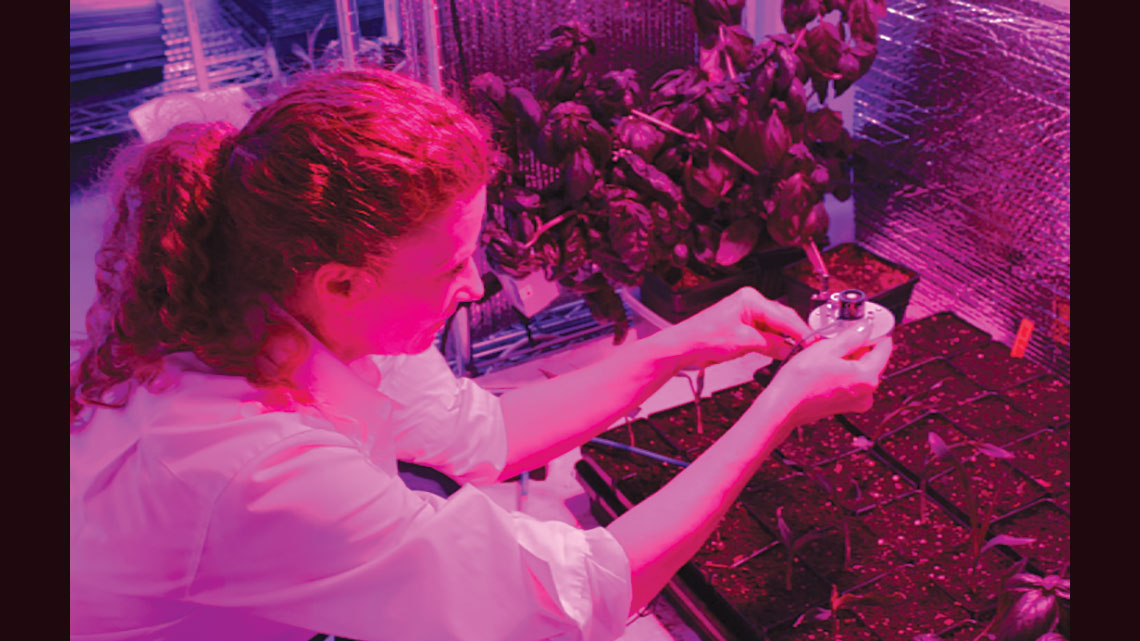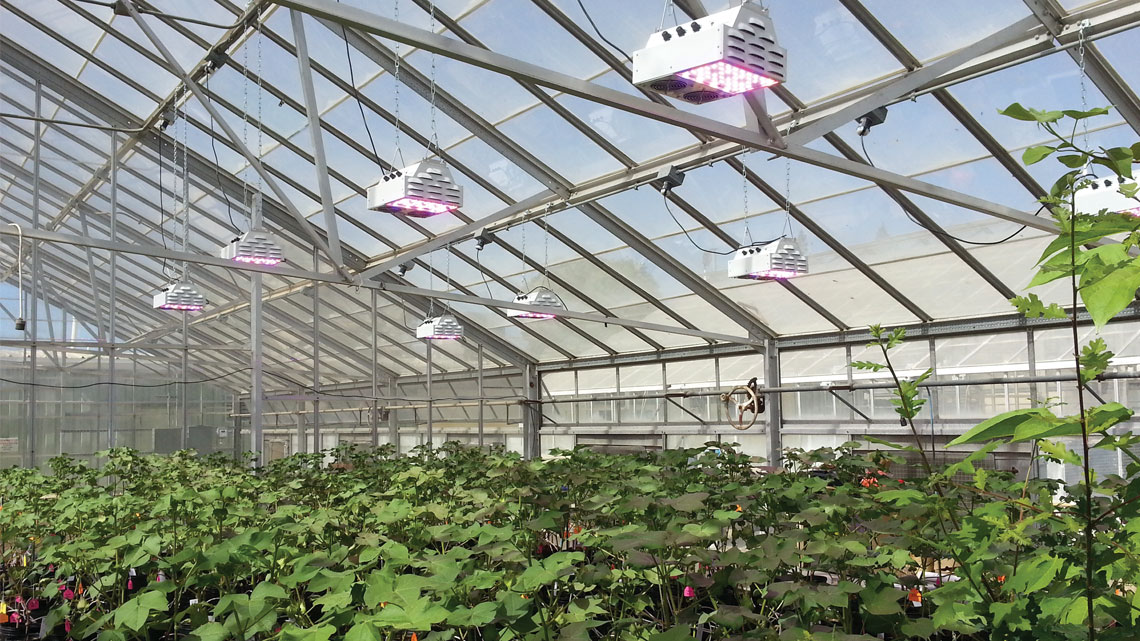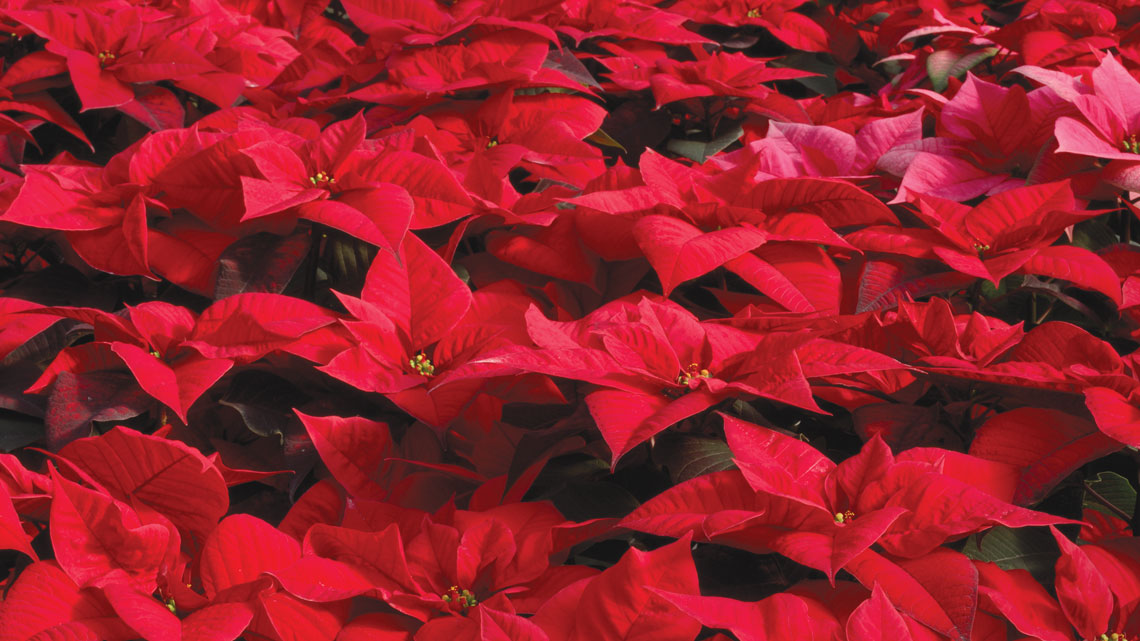Being able to control the entire spectrum of light brings innumerable benefits to the seed industry.
Thanks to a technologythat’s become increasingly popular within the seed industry, growers are able to precisely control light, creating conditions that are most conducive to growing plants ranging from soybeans, to petunias and poinsettias.
LED lighting technology has taken off in the seed and horticultural industries. The Texas-based LED lighting manufacturer Illumitex recently announced its relocation to new, expanded headquarters — a move that more than doubles the company’s space. The company’s rapid growth necessitated the move to the new 25,000-square-foot plant, which includes 17,000 square feet of manufacturing space.
Such developments within the LED industry are in part due to growers like Matt Ruibal discovering the benefits of this technology.
“It gives me an advantage over my competitors,” says Ruibal, Ruibal’s Plants of Texas vice president of growing operations. “I can use it in my advertising, that we’re using this new technology to grow petunias for the Dallas market.”
Comprised of nearly 130 greenhouses covering nearly 30 acres, Ruibal’s Plants of Texas, grows high-quality bedding plants. Ruibal first started using LED lighting technology manufactured by Philips Lighting three years ago to aid in the production of petunias.
Ruibal’s has been increasingly receiving requests for flowering bedding plants as early as March, according to a case study by Philips. Normally it takes 10 weeks for petunias started in January to flower. In August, when day lengths are longer, Ruibal’s is able to flower petunias in just three weeks.
“I needed a petunia to bloom in mid-February,” Ruibal says. “A petunia is a day length-sensitive plant, and I needed to mimic a long day to get it to bloom early.”
As Philips notes in the case study, Ruibal set up greenhouse trials that included three different Philips GreenPower LED flowering lamps (deep red/white/far-red, deep red/white and far-red), compact fluorescent lamps and natural day length. The far-red LEDs were used in combination with the compact fluorescent lamps.
All of the lamps were used every day for seven weeks starting from time of transplant. The lamps were turned on at midnight and off at 7 a.m. About 250 flats of petunias were grown under each light setup. All of the petunias were from the Dream series and included the varieties Midnight, Pink, White and Mixture.
The deep red/white LED flowering lamps were the most effective. Petunias under the full spectrum LED lamps with deep red/white/far-red LEDs and the combination far-red LED and compact fluorescent lamps flowered about five days earlier, according to Philips.
“The deep red/white spectrum gives us 10 to 12 days on average quicker blooming in January and February,” Ruibal says. “We can now produce 20 to 25 percent more petunias than we would normally grow. I can sell a blooming petunia earlier, so I can get another cycle in early season.”
Greater Control
LED lighting isn’t new, but its application is becoming more common in the seed industry as growers discover its benefits. Jimmy Byrtus, research and trials manager for the California-based horticultural lighting firm LumiGrow, says the technology allows growers to control lighting conditions like never before.
“Before, with traditional lighting, all you really had the power to do was turn it on and turn it off,” he says. “Now we give you complete control. Not only can you turn it on, but you can turn it on and manipulate it any way you want to, in ways you couldn’t before and really dig into the spectral science of what makes a plant tick.”
[bs_row class=”row numbers red”]
[bs_col class=”col-xs-3″]14 hours
is the minimum day length Syngenta uses to make sure all poinsettia cuttings are of excellent quality.
[/bs_col] [bs_col class=”col-xs-3″]96%
is the total energy cost reduction Syngenta saw with the Illumitex LED grow lights compared to the incandescent system.[/bs_col] [bs_col class=”col-xs-3″]10-12 days
quicker blooming in January and February with the deep red/white LED spectrum.[/bs_col] [bs_col class=”col-xs-3″]$5.32
is the average cost to replace an incandescent lamp.[/bs_col]
[/bs_row]
LumiGrow has partnered with seed industry stakeholders like Bayer CropScience, BASF, Dow AgroSciences and the U.S. Department of Agriculture, among others, to show how LED lighting allows growers to control the entire spectrum of light to achieve results they couldn’t before, growing everything from soybeans to bedding plants.
“When growing plants, humans have been able to manipulate fertilizer and pesticides,” Byrtus says. “Through genetics we’ve been able to manipulate virtually everything — except for light. The difference with LED light is you can actually manipulate the spectrum of the light, so you can give the plant more red, or more blue, things of that nature.”
By its very nature, LED lighting also emits far less heat than traditional light sources, which represents another benefit for growers producing heat-sensitive plants, such as poinsettias.
Energy Savings
Syngenta grows poinsettias at its Kenya Cuttings facility in Kenya, Africa. Syngenta is one of the top three poinsettia producers, responsible for around 20 percent of poinsettias sold in Europe and the United States. The company partnered with the Texas-based Illumitex to outfit the facility with LED lamps to help Syngenta save on energy costs.
“Traditionally, incandescent or fluorescent lighting with a low intensity has been used to supply the required light needed to grow poinsettias,” Illumitex notes. “However, only a fraction of the total light spectrum emitted by incandescent lamps is required, which results in an inefficient use of energy and over-use of capital equipment.”
According to Josef Fischer, Syngenta global asset manager lawn and garden, Syngenta’s goal with its poinsettias is to control the time of flowering, because otherwise the mature poinsettias would be too small. “Therefore, we use LED to increase the day length to about 14 hours minimum in order to make sure all cuttings are of excellent quality,” Fischer says.
At Syngenta’s Kenya facility, the company saw a total energy cost reduction of 96 percent, as compared to the incandescent system replaced by the Illumitex LED grow lights. Maintenance costs, too, were greatly reduced, Illumitex notes. Total cost to replace an incandescent lamp averaged $5.32, or $118.50 per bay, each year. By comparison, the installed LED lights had no maintenance requirements during the trial.
“We’re right at the beginning of this science, and we’re just starting to understand how powerful it’s going to be.”
— Melanie Yelton
“The size of your operation and the scale of the project will determine your return on investment, but generally it’s a period of one to three years to pay for itself,” Byrtus of LumiGrow notes. “The lights can also be recycled in the electronic waste recycling stream. With traditional lighting, you had to take special care to dispose of those lights correctly.”
LED bulbs also last longer than traditional bulbs. “I worked for a large seed company, and in our research greenhouses we generally changed our lights every six months,” Byrtus says. “That adds to your costs.” LumiGrow guarantees its LED bulbs for five years.
Byrtus adds that LED lighting will only become more popular as its benefits are realized. Melanie Yelton, director of research for LumiGrow, agrees. “It’s a brave new world out there. There are so many experiments that haven’t been done,” Yelton says. “We’re right at the beginning of this science, and we’re just starting to understand how powerful it’s going to be.” SW














